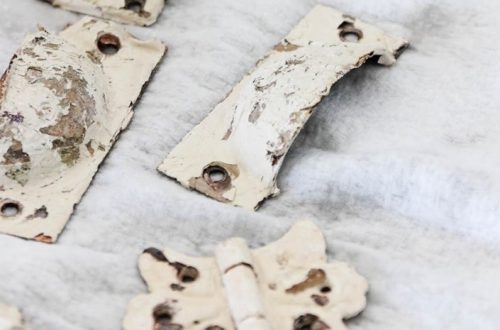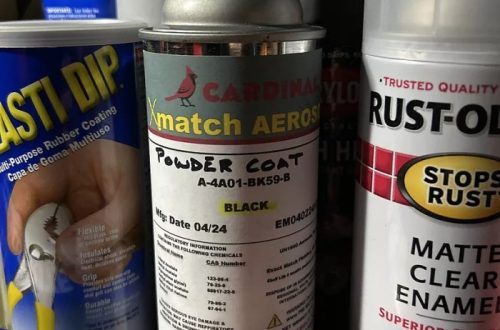Part 1: Understanding Oil Pastels
1. Composition of Oil Pastels:
Oil pastels are a highly versatile art medium that is primarily composed of pigments, waxes, and oils. These specific ingredients can vary widely between different brands and manufacturers. The pigments within the pastels are responsible for providing the vibrant and rich colors, while the waxes and oils function to bind the mixture together, resulting in a smooth and creamy texture that is ideal for blending and layering. However, it is important to recognize that not all oil pastels are created equal, and the specific components used in their composition can significantly impact their safety and overall performance. Therefore, artists and users should be aware of the variability in ingredients when selecting oil pastels for their artwork, particularly if they have sensitivities or concerns about potential health risks associated with certain chemical components.
2. Popularity and Usage:
Oil pastels have become widely popular among artists of all ages due to their vivid hues, user-friendly nature, and adaptability. Their frequent use in schools, art studios, and homes makes it imperative to comprehend the potential health hazards related to their usage. It is worth noting that children and individuals with sensitive skin or respiratory conditions may be especially vulnerable to adverse effects resulting from oil pastels. While the pigments and binders in oil pastels are generally considered non-toxic, some individuals may still experience skin irritation or allergic reactions when in contact with them. Moreover, the dust generated from blending or erasing oil pastels can pose respiratory risks when inhaled. Therefore, it is advisable to always exercise caution and ensure proper ventilation when using oil pastels, particularly in environments where children or individuals with known sensitivities are present.

Part 2: Identifying Potential Hazards
1. Volatile Organic Compounds (VOCs):
Some oil pastels may contain VOCs, which are organic chemicals that can evaporate into the air. Exposure to high levels of VOCs can cause respiratory irritation, headaches, dizziness, and other health problems. While the amount of VOCs in oil pastels is generally low, proper ventilation is essential when using them, especially in enclosed spaces.
2. Heavy Metals:
Heavy metals, such as cadmium, lead, and chromium, have been historically used in pigments due to their vibrant colors. However, these metals pose significant health risks when ingested or inhaled.
- Cadmium: Known for its bright yellow and red hues, cadmium is a toxic metal that can cause respiratory issues, kidney damage, and bone disease with prolonged exposure.
- Lead: Once widely used for its white pigment, lead is a neurotoxin that can damage the brain, nervous system, and kidneys. Even low-level exposure can harm children’s development.
- Chromium: While some forms of chromium are essential for human health, hexavalent chromium is highly toxic and can cause respiratory problems, skin irritation, and damage to DNA.
Prolonged or repeated exposure to oil pastels containing these heavy metals can lead to a range of health issues. These include:
- Respiratory problems: Difficulty breathing, asthma, and chronic bronchitis
- Kidney damage: Impaired kidney function
- Neurological issues: Cognitive impairment, mood disorders, and nerve damage
- Digestive problems: Nausea, vomiting, and stomach pain
- Skin irritation: Dermatitis and allergic reactions
To protect your health, it’s crucial to choose oil pastels from reputable brands that prioritize the use of non-toxic pigments. These brands often use safer alternatives that produce vibrant colors without the health risks associated with heavy metals.
By making informed choices and understanding the potential hazards, you can enjoy your art without compromising your well-being.

Part 3: Safety Precautions
1. Ventilation:
Ventilation is a critical component of safe oil pastel use. Oil pastels, while generally safe, can release volatile organic compounds (VOCs) and other potentially harmful particles into the air. These substances can cause respiratory irritation, headaches, dizziness, and other health issues.
To minimize exposure to these harmful fumes, it’s essential to work in a well-ventilated area. This means:
- Opening windows: Allow fresh air to circulate by opening windows as much as possible.
- Using exhaust fans: Employ exhaust fans to draw out stale air and bring in fresh air from outside.
- Considering air purifiers: In poorly ventilated spaces, air purifiers equipped with HEPA filters can help capture airborne particles.
2. Hand Hygiene:
After handling oil pastels, it is important to wash your hands thoroughly with soap and water. It’s advisable to pay particular attention to cleaning the areas around your nails and between your fingers to ensure that any residual pigments or binders are effectively removed. Moreover, it is strongly recommended to avoid touching your face or mouth while working with the medium. This simple but crucial practice can help prevent any accidental ingestion of potentially harmful substances found in oil pastels. By being mindful of these hygiene measures, artists and users of oil pastels can significantly reduce the risk of exposure to any toxic components. Additionally, incorporating these practices into your art routine can help ensure a safe and enjoyable experience when working with oil pastels. Always remember to prioritize safety and cleanliness when using artistic materials to protect your health and well-being.
Part 4: Choosing Safe Oil Pastels
1. Research and Selection:
- Non-toxic labels: Look for products explicitly labeled as “non-toxic.” While this term isn’t strictly regulated, it generally indicates that the manufacturer has taken steps to minimize harmful ingredients.
- Artist-grade vs. student-grade: Artist-grade oil pastels typically contain higher quality pigments and binders, often making them safer choices. However, this isn’t always the case, so it’s essential to check ingredient lists.
- Certified non-toxic options: Some brands obtain certifications from reputable organizations that verify the absence of harmful substances. These certifications provide an added layer of assurance.
- Ingredient lists: If available, carefully examine the ingredient list for any known allergens or toxic substances. Be cautious of pigments containing heavy metals like cadmium, lead, or chromium.

2. Awareness and Education:
Informational Resources:
- Create educational materials: Develop informative brochures, posters, or online resources detailing the potential hazards of oil pastels, including the types of chemicals involved, health risks, and safety precautions.
- Collaborate with art educators: Work with art teachers and schools to incorporate oil pastel safety into art curriculum. Provide age-appropriate information and demonstrations.
- Leverage online platforms: Utilize social media, blogs, and websites to share information about oil pastel safety, reaching a wide audience of artists and consumers.
Community Outreach:
- Host workshops and seminars: Organize workshops or seminars for artists, parents, and educators to discuss oil pastel safety, proper handling techniques, and disposal methods.
- Partner with art supply stores: Collaborate with local art supply stores to distribute educational materials and provide in-store demonstrations on safe oil pastel practices.
- Engage with art organizations: Work with art associations and organizations to promote oil pastel safety initiatives and disseminate information among their members.
Conclusion:
Using oil pastels is generally considered safe, but it’s crucial to be aware of potential toxicity issues. Understanding the composition of oil pastels, which typically includes pigments, binding agents, and possibly some oils or solvents, can help in making informed and safe choices. It’s important to take appropriate precautions when using oil pastels, such as ensuring proper ventilation in your workspace to minimize inhalation of any particles or fumes. Additionally, practicing good hygiene, such as washing your hands thoroughly after handling oil pastels to avoid accidental exposure, can further mitigate potential risks. Choosing products from reputable manufacturers and being mindful of any specific safety information provided on the packaging can also contribute to a safer experience. By adopting these measures and being informed about the potential hazards, you can fully enjoy the benefits of using oil pastels as a versatile art medium while prioritizing your health and well-being.




